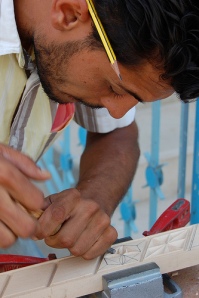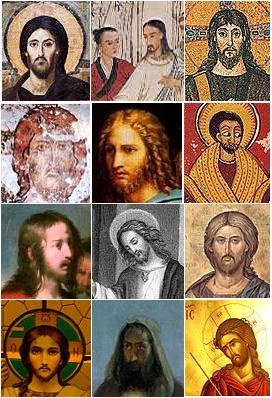
How Do You Picture Jesus?
Have you ever wondered what Jesus looked like? I think that we safely can say that he wasn’t pale and sickly-looking the way that many of the Renaissance painters made Him to be. Jesus would, in fact, have had somewhat dark skin. If He was of average height for His day—and we have no reason to believe that He wasn’t—Jesus most likely stood just over five feet tall. And though not a physical giant, it is reasonable to assume that Jesus had a fairly muscular build.
History calls Him a carpenter, but the actual Greek word is téktōn, which can be translated as craftsman or builder. Being that wood was not especially plentiful in the Judean region, He probably made yokes, plows, and tools; or He worked as a stone mason. Justin Martyr, a first century church father, said it was the former, so Christ’s description as a carpenter has stuck. Either way, as a craftsman—someone who worked with His hands and spent time around other builders—Jesus would not have been a physical wimp, regardless of how He is often portrayed.
The physical picture we have of Jesus doesn’t really matter all that much, but how we view His personality means a great deal. It is completely inaccurate to envision the Son of Man as a timid, somewhat weak-willed guy who just walked around forgiving everybody regardless of what they said and did.
Through the Scriptures, we sometimes see an angry Jesus; He turned over the tables of the money changers and blasted the Pharisees for their hypocrisy. Jesus was not hesitant to express His displeasure—and even His wrath—but His anger was never self-centered. The Son of God hated injustice with a passion.

photo credit: Simon Blackley via photopin cc
As a craftsman, Jesus was also accustomed to beginning with raw materials in an effort to produce a finished product. While He may have enjoyed simply working with His hands, there was always an end-goal in mind. A craftsman never looks with complete pleasure upon rough lumber until He can envision a finished product. A master craftsman never fears working with flawed materials; in spite of the difficulties, these materials make some of the most beautiful products. There is a problem, however, if the raw materials always remain raw—if they never progress toward their final goal.
Ephesians 2:10 (AMP) tells us that “We are God’s [own] handiwork (His workmanship), recreated in Christ Jesus, [born anew] that we may do those good works which God predestined (planned beforehand) for us [taking paths which He prepared ahead of time], that we should walk in them [living the good life which He prearranged and made ready for us to live].”
I honestly don’t know how He looked physically, but I see in Jesus both the passion and wisdom of a master craftsman. Undoubtedly, He will accept us as we are, but He will never be content to allow us to remain in our current states. His goal is to take our flawed raw materials and produce a masterpiece of fruitful service. Let’s not fool ourselves into thinking that the King of kings and Lord of lords would ever be content with anything less.
banner photo credit: Unhindered by Talent via photopin cc


